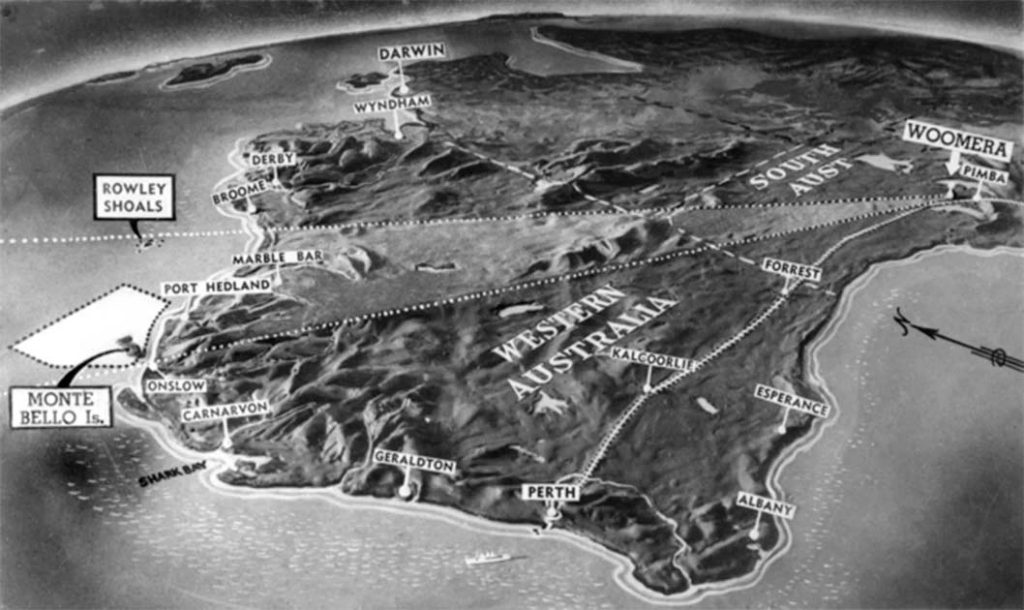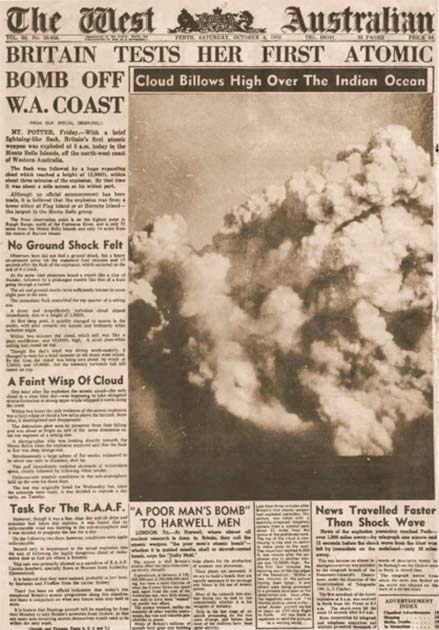It was a moment that would change the course of history, forever altering the global power dynamic and ushering in a new era of nuclear weapons and international relations. On October 3, 1952, a team of British scientists and military personnel conducted the first-ever nuclear test by the United Kingdom.
The operation, codenamed “Operation Hurricane,” was a monumental achievement in scientific and technological innovation, but it also raised important ethical and environmental questions about the use and testing of nuclear weapons. This is the fascinating story of Operation Hurricane and how it changed the world.
What was Operation Hurricane?
Following the events of World War 2, there was a mad rush to become a nuclear power and everyone was keen to play catch up to the Americans. This included their long-time allies, the United Kingdom. By 1952 the British were ready for their first nuclear test.
The codename for this momentous event was Operation Hurricane and it took place on 3 October 1952. The site for the explosion was Main Bay, just off Trimouille Island, part of the Montebello island chain of Western Australia.
There are numerous different types of nuclear bombs, but on this day the United Kingdom’s Atomic Weapons Establishment (AWRE) tested a plutonium implosion-type weapon. For anyone not well versed in the different types of nuclear weapons, this was similar to the kind of bomb the Americans had used on Hiroshima and Nagasaki towards the end of WW2.

Like any major endeavor, Operation Hurricane was initially plagued by setbacks. The first problem was the chosen site of the test. It soon turned out that the survey party chosen to choose the site had made some major errors.
The chosen testing site was hard to get to and was surrounded by rough seas which led to major delays and safety fears. The test device was large and heavy and had to be transported over long distances and then assembled in pieces. To get the pieces to the test site they had to be transferred between boats in choppy conditions. Not ideal when assembling a nuclear device.
- Secrets of the Polygon: The Soviet Nuclear Testing Grounds
- The NS Savannah: Whatever Happened to Nuclear Powered Civilian Ships?
The team themselves also had to waste several hours a day just commuting between the HMS Campania (the ship they were sleeping on) and the site of the test. The rough conditions meant some days they also had to wait hours just to be picked up or dropped off. Particularly rough seas from the 10th to 14th of August brought the project to a halt altogether.
This all being said, the Operation was ultimately a massive success. After one final delay while the team waited for the right weather conditions, the bomb was detonated on 3 October. Its yield was estimated to be 25 kilotons, making it the largest nuclear explosion ever recorded at the time.
Of course, success for the British here didn’t come without consequences. Particularly for the environment. Early nuclear testing was extremely messy. The radioactive contamination of the Montebello islands was devastating. It took until the 1980s for the residual radioactivity to decay to levels considered to be “non-harmful”, but the island remained a no-go area until 1992.
How Did the UK Achieve Success?
Simply put, it was a team effort. Operation Hurricane was the result of scientific expertise, industrial capability, and a fair amount of international collaboration. At the head of the effort was the AWRE, mentioned above.
The AWRE worked closely with industrial partners like the English Electric Company and the United Kingdom Atomic Energy Authority to develop the different components of the test device. The design of the weapon was then based on the implosion method, which had already been proven effective by the Americans. This method used conventional explosives to compress a plutonium core until it achieved critical mass, resulting in a nuclear chain reaction (in layman’s terms, a big explosion).
Testing the weapon took international cooperation. An English survey team singled out the Montebello Islands as the ideal testing site as it was isolated and had no human population to speak of. The UK government approached the Australian government and negotiated permission to conduct the test on Australian territory.
How did the UK get all these parties to work together? Necessity and desperation. The UK was used to being a world power but in the new reality of post WW2 geopolitics it was falling behind.
- Worth Dying For? Julius and Ethel Rosenbergs’ Stolen Secrets
- Whoops! How did the US Misplace Six Nuclear Bombs?
Both the US and USSR had already developed nuclear weapons. The UK had to catch up, not just for national pride but to keep a seat as a world power. As a member of the Commonwealth and close ally to the UK, it benefited the Australians to help the British in their endeavor.
How Did it Change the Global Power Dynamic?
Adding another nuclear power had massive repercussions for the global power dynamic. Firstly, it established the UK as the third country to possess nuclear weapons. This gave them a new level of military and strategic influence.
Secondly, it led to a new global arms race and arms control dynamic. The fact the UK and the US were allies drove the Soviets to test more and more bombs of increasing sizes. As Cold War tensions threatened to grow ever sharper, America’s closest ally developing nuclear weapons didn’t exactly help ease tensions.

On the other hand, they might have been allies, but the US had a long history of refusing to share its weapon advancements with the British (or downright stealing British technology and then claiming it for their own). While the two remained close allies, there were various fallings out over issues such as weapons sharing and arms control.
The creation of a third nuclear power also encouraged other countries to seek their own nuclear weapons. The proliferation of these devastating weapons meant the threat of nuclear war became a very real thing. This led to the establishment of a range of arms control treaties and non-proliferation agreements.
The Need for Prestige
The Operation Hurricane nuclear test was a defining moment in the history of nuclear weapons and international relations. It marked the emergence of the UK as a nuclear power and contributed to a new global arms race and arms control dynamic that continues to shape international affairs today.
The test also raised important ethical and environmental questions about the use and testing of nuclear weapons, which remain unresolved to this day. As we continue to navigate the complex and dangerous world of nuclear weapons and international relations, the lessons of Operation Hurricane continue to resonate and remind us of the urgent need for global cooperation and a commitment to peace and disarmament.
Top Image: The detonation of the Operation Hurricane marked Britain’s emergence as a nuclear power. Source: Naval Historical Collection / Public Domain.